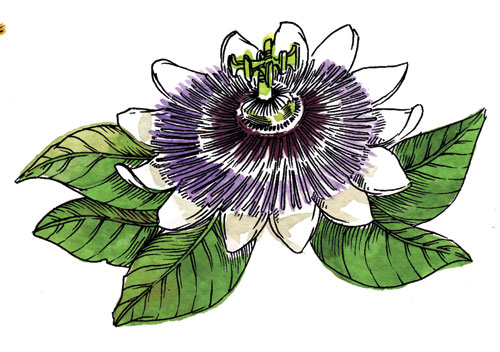
Natural Beauties: Indiana Native Plants
At my old house, I spent many a fine spring day tending to flower beds in the postage-stamp yard. It teemed with unruly native plants—that is, foliage identified by botanists and naturalists as indigenous to this region—collected over many years, and I regarded that small landscape not as a garden but as a miniature nature preserve, with each specimen neatly identified by a metal nameplate. When I moved, I left the markers behind in the hope that the new owner wouldn’t mistake the plants for weeds and rip them from the earth. I still can’t drive by the house, for fear of seeing my precious collection replaced by plain old store-bought marigolds—and then crying a little.
Suffice it to say, native plants can inspire a fervent following. And lately, this niche passion is taking root among a wider audience. Benefits range from the practical to the aesthetic to the ethical. Indigenous plants are hardy; adapted to our mercurial climate, many need little fuss or watering (call it “sustainability” around your Prius-driving pals). It’s okay to let them grow a little wild, like the lush meadow in the opening shot of Little House on the Prairie. And because local fauna has evolved along with the flora, native plants turn a yard into a wildlife habitat for birds and butterflies.
While some Indiana wildflowers can be quite showy—like the sensuous, exotic-looking Passion Flower—many of the blooms are more subtle than the hybrids bred to turn heads at The Home Depot; loving them is like looking past the prom queen and falling for the girl with glasses who reads poetry. Devotees have been known to rescue delicate woodland Prairie Trilliums from the bulldozer of development and transplant them to more tranquil environs.
“Using native plants is part of the green movement,” says Nancy Hill of the Indiana Native Plant & Wildflower Society. “It’s becoming sexy.” Indeed, attendance at the group’s sale and auction, held annually at Park Tudor the Saturday morning of Mother’s Day weekend (details at inpaws.org), has increased by half over the last few years. Enthusiasts line up before the doors open, eager for first dibs. The trees, flowers, and ferns are scooped fresh from gardens or endangered habitats, plopped worms-and-all into repurposed plastic pots, and priced at $2 to $20 each. With our handy field guide, you’ll know the Hairy Beardtongues from the Birdfoot Violets.
PURPLE PASSION FLOWER
Passiflora incarnata
Habitat Wood’s edge
Blooms Midsummer
Notes Perennial climbing vine, up to 25 ft.; attracts butterflies; hard to find for sale (but showy flowers merit the search); needs full or part sun and fertile soil

Viola pedata
Habitat Wood’s edge
Blooms Mid-to-late spring
Notes Perennial, 4–10 in.; attracts butterflies; prefers sun and dry soil

Trillium recurvatum
Habitat Woodland
Blooms Mid-spring
Notes Perennial, 6–12 in.; prefers shade and rich, loamy soil
INDIANGRASS
Sorghastrum nutans
Habitat Prairie grassland
Blooms Late spring; rust-tone seed awns in late summer
Notes Perennial, 3–7 ft.; likes sun and average-to-dry soil
QUEEN OF THE PRAIRIE
Filipendula rubra
Habitat Water’s edge
Blooms Early-to-midsummer
Notes Perennial, 3–6 ft.; attracts butterflies; thrives in full or part sun and moist soil

Penstemon hirsutus
Habitat Prairie grassland
Blooms Early summer
Notes Perennial, up to 2 ft.; attracts butterflies and hummingbirds; needs full or part sun and dry soil

Aronia melanocarpa
Habitat Wood’s edge
Blooms Late spring; decorative berries in late summer; colorful fall foliage
Notes Shrub, up to 12 ft.; wants sun or part shade
CINNAMON FERN
Osmunda cinnamomea
Habitat Woodland
Blooms None; tall, chocolate-brown fronds in the spring
Notes Perennial, up to 5 ft. (full maturity); needs shade and moist soil
SWITCHGRASS
Panicum virgatum
Habitat Prairie grassland
Blooms Midsummer; bushy, reddish-colored seed awns in late summer
Notes Perennial, 3–5 ft.; attracts butterflies; likes sun and average-to-dry soil

Clematis viorna
Habitat Woodland
Blooms Late spring
Notes Perennial vine; hard to find,but desirable due to unique blossoms; likes shade or part shade and moist soil; also called “Leatherflower
DENSE BLAZING STAR
Liatris spicata
Habitat Prairie grassland
Blooms Late summer
Notes Perennial, up to 4.5 ft.; attracts butterflies, birds, and hummingbirds; wants sun and average-to-moist soil
Illustrations by Lucy Engelman










